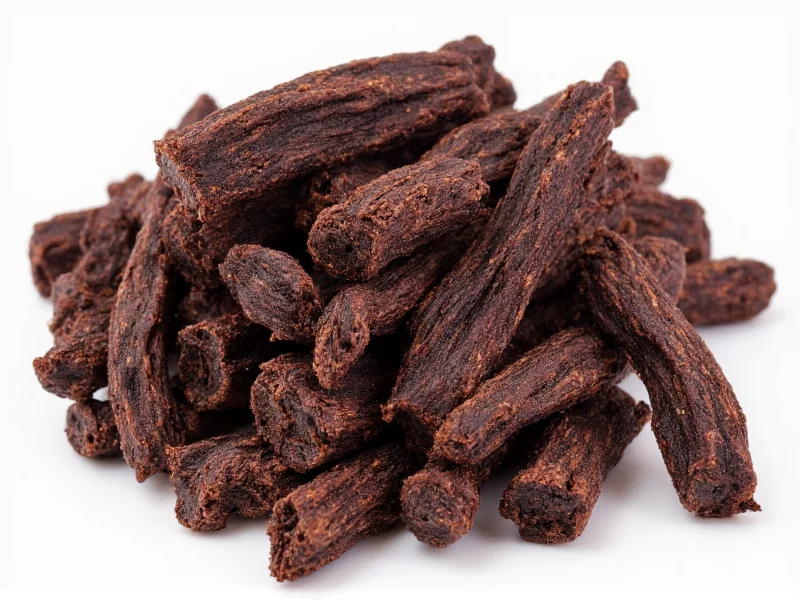When searching for "vegetable licorice," many people mistakenly believe there's a specific vegetable called licorice. In reality, licorice (Glycyrrhiza glabra) is a legume plant whose root is used to create the distinctive flavor, but it's not classified as a vegetable in culinary terms. What consumers often seek are vegetables and herbs that naturally contain the same flavor compound found in licorice, providing a similar taste experience with greater nutritional benefits.
Understanding Licorice Flavor in Vegetables
The distinctive licorice flavor comes primarily from a compound called anethole, which is naturally present in several plants. While licorice root contains glycyrrhizin (which gives it sweetness), the characteristic flavor profile shares similarities with certain vegetables and herbs that contain anethole instead. This explains why some vegetables taste reminiscent of licorice even though they're botanically unrelated to the licorice plant.
Top Vegetables and Herbs with Licorice Flavor
Several edible plants naturally contain anethole, creating that familiar licorice-like taste without the need for artificial flavorings. These provide healthier alternatives to processed licorice candy while offering substantial nutritional benefits.
| Plant | Botanical Name | Primary Flavor Compound | Nutritional Highlights |
|---|---|---|---|
| Fennel | Foeniculum vulgare | Anethole (80-90% of essential oil) | High in fiber, vitamin C, potassium, and antioxidants |
| Anise | Pimpinella anisum | Anethole (80-95% of essential oil) | Rich in iron, calcium, and manganese; contains phytoestrogens |
| Star Anise | Illicium verum | Anethole (80-90% of essential oil) | Source of shikimic acid (used in antiviral medications), vitamin C |
| Tarragon | Artemisia dracunculus | Anethole (varies by cultivar) | Contains polyphenols, potassium, and iron |
| Dill | Anethum graveolens | Carvone and limonene (with anethole notes) | Good source of vitamin C, manganese, and calcium |
Fennel: The Most Accessible Vegetable Licorice Alternative
Fennel stands out as the most versatile vegetable with natural licorice flavor. Both the bulb and fronds are edible, offering different culinary applications. The crisp bulb can be eaten raw in salads, roasted, grilled, or braised, while the feathery fronds serve as a flavorful herb. Unlike processed licorice candy which typically contains 30-50% sugar, raw fennel contains only about 7% natural sugars while providing 3.1g of fiber per 100g.
When selecting fennel for its licorice-like qualities, look for firm, heavy bulbs with bright green fronds. The thicker the stalks, the more pronounced the licorice flavor will be. For those new to cooking with fennel, start with small amounts as the flavor can be quite strong. The bulb becomes sweeter and less licorice-forward when cooked, making it versatile for both savory and sweet applications.
Nutritional Comparison: Vegetable Licorice vs. Candy Licorice
Understanding the nutritional differences between vegetables with licorice flavor and commercial licorice candy is crucial for making informed dietary choices. While both contain the characteristic flavor, their health impacts differ significantly.
Black licorice candy typically contains:
- 60-70% sugar (including added glucose syrup)
- Artificial colors and flavors
- Minimal fiber (less than 1g per serving)
- Glycyrrhizin (which can cause health issues in excess)
By contrast, fennel (as a representative vegetable licorice alternative) provides:
- Natural sugars (about 3.5g per 100g)
- No added sugars or artificial ingredients
- 3.1g of dietary fiber per 100g
- Vitamins C and B9, potassium, and manganese
- Antioxidants like rosmarinic acid and quercetin
Culinary Applications of Natural Licorice-Flavored Vegetables
Chefs and home cooks increasingly turn to vegetables with natural licorice flavor as sophisticated alternatives to processed licorice. These ingredients add complexity to dishes without overwhelming sweetness. Fennel pairs exceptionally well with fish, citrus, and olive oil in Mediterranean cuisine. Anise seeds enhance tomato-based sauces and braised meats. Star anise is essential in Chinese five-spice powder and adds depth to broths and stews.
For those seeking natural licorice substitutes in baking, consider these approaches:
- Fennel pollen as a finishing spice on desserts
- Infused fennel syrup instead of licorice extract
- Finely grated raw fennel in fruit salads
- Anise seed in place of licorice powder in spice blends
Health Considerations: Licorice Root vs. Vegetable Alternatives
While vegetables with licorice flavor offer health benefits, it's important to distinguish them from licorice root products. Glycyrrhizin in licorice root can cause hypertension, potassium depletion, and other health issues when consumed in excess (more than 50g of black licorice daily for more than two weeks). The European Food Safety Authority recommends limiting glycyrrhizin intake to 100mg per day.
Vegetables like fennel and anise don't contain glycyrrhizin but instead offer anethole, which has demonstrated antioxidant and anti-inflammatory properties without the same health risks. Research published in the Journal of Agricultural and Food Chemistry indicates anethole may support digestive health and exhibit antimicrobial properties, making these vegetable alternatives not just flavorful but potentially beneficial.
Selecting and Storing Vegetables with Licorice Flavor
Proper selection and storage maximize both flavor and nutritional value of these vegetables. For fennel, choose bulbs that feel heavy for their size with no brown spots. Store wrapped in a damp paper towel in the refrigerator crisper drawer for up to 5 days. Anise seeds should be stored in an airtight container away from light and heat, maintaining potency for 6-12 months. Star anise retains flavor best when stored whole in a cool, dark place.
When incorporating these vegetables into your diet as natural licorice substitutes, start with small amounts to assess your tolerance. Some people may experience mild digestive effects when first introducing these foods, particularly if consuming larger quantities than usual. Gradually increasing portions allows your system to adjust while helping you discover your preferred flavor intensity.











 浙公网安备
33010002000092号
浙公网安备
33010002000092号 浙B2-20120091-4
浙B2-20120091-4